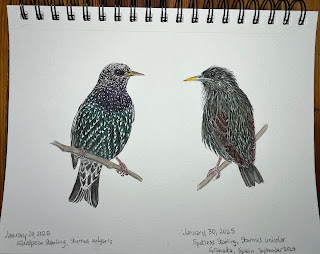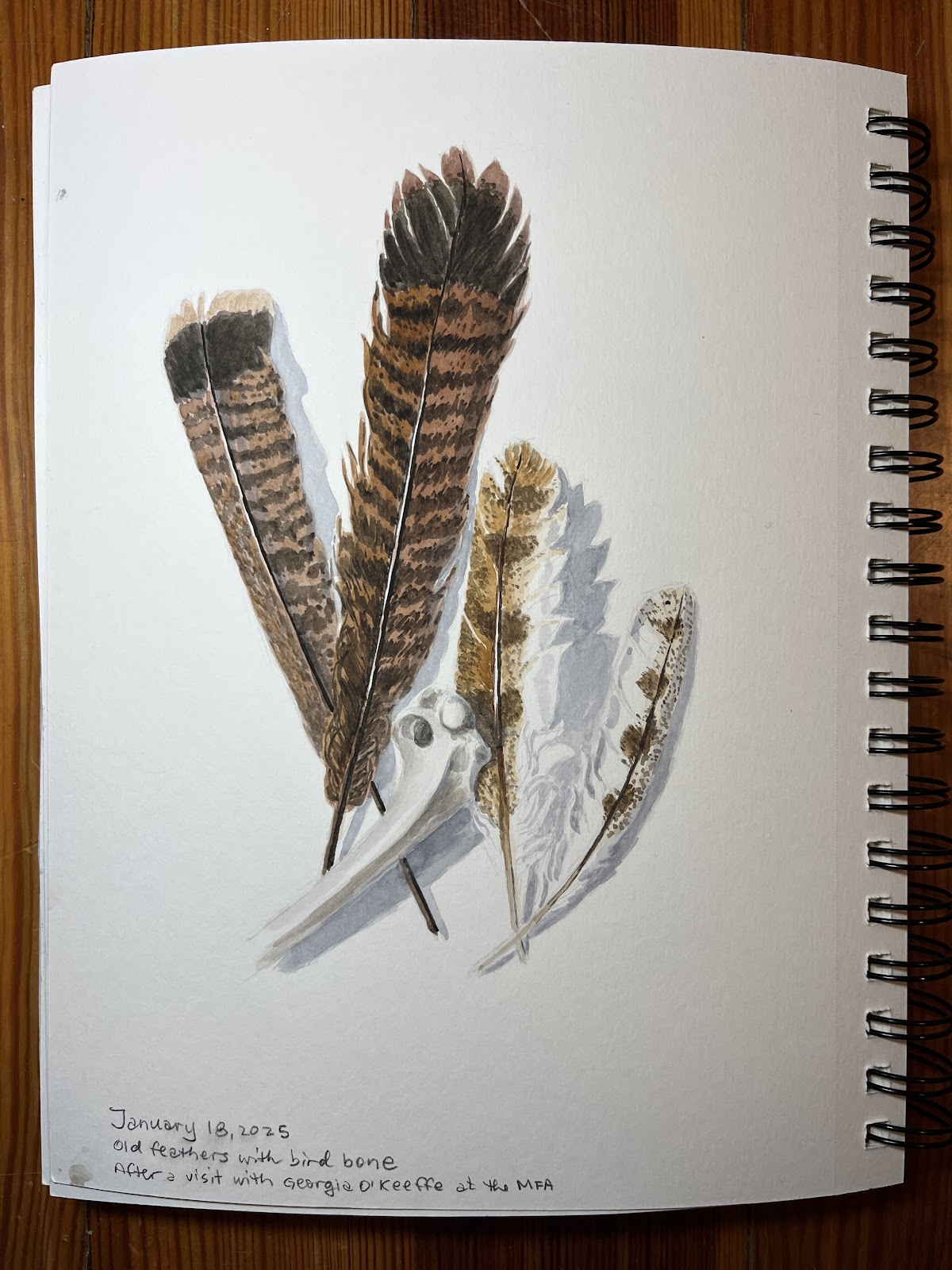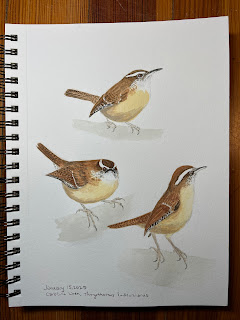We did it! Made it to the end of the month. My final painting is an idea, an experiment and a preliminary sketch for something I plan to do a larger complete watercolor of. The Bearded Reedling is a small seed-eating, social denizen of reed beds throughout Europe, and it was Jorge's major target bird for our trip (a new family - Panuridae). The experiment was to paint a somewhat more detailed background behind the birds, which they are actually a part of - if you look back through this January series, I tend to plop the bird down on top of a scene, to give a sense of place. Still have some work to do!
 |
| Bearded Reedling, Panurus biarmicus Dragomansko Marsh, Sofia Bulgaria, September 8, 2024 |
 |
| Northern Cardinal, Cardinalis cardinalis Horsebarn Hill, Storrs Connecticut |















































